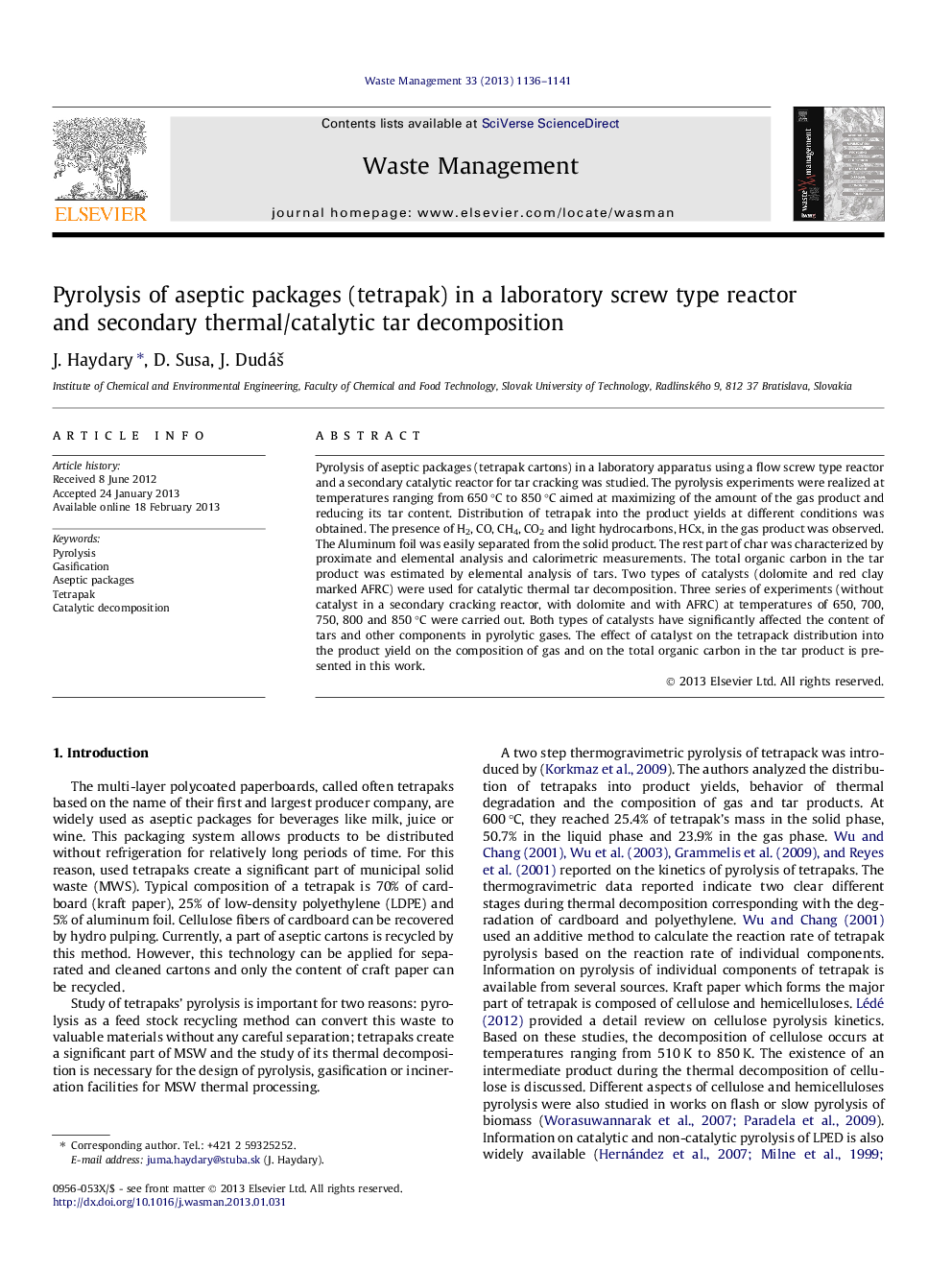| کد مقاله | کد نشریه | سال انتشار | مقاله انگلیسی | نسخه تمام متن |
|---|---|---|---|---|
| 4471554 | 1315033 | 2013 | 6 صفحه PDF | دانلود رایگان |

Pyrolysis of aseptic packages (tetrapak cartons) in a laboratory apparatus using a flow screw type reactor and a secondary catalytic reactor for tar cracking was studied. The pyrolysis experiments were realized at temperatures ranging from 650 °C to 850 °C aimed at maximizing of the amount of the gas product and reducing its tar content. Distribution of tetrapak into the product yields at different conditions was obtained. The presence of H2, CO, CH4, CO2 and light hydrocarbons, HCx, in the gas product was observed. The Aluminum foil was easily separated from the solid product. The rest part of char was characterized by proximate and elemental analysis and calorimetric measurements. The total organic carbon in the tar product was estimated by elemental analysis of tars. Two types of catalysts (dolomite and red clay marked AFRC) were used for catalytic thermal tar decomposition. Three series of experiments (without catalyst in a secondary cracking reactor, with dolomite and with AFRC) at temperatures of 650, 700, 750, 800 and 850 °C were carried out. Both types of catalysts have significantly affected the content of tars and other components in pyrolytic gases. The effect of catalyst on the tetrapack distribution into the product yield on the composition of gas and on the total organic carbon in the tar product is presented in this work.
► Pyrolysis of aseptic packages was carried out in a laboratory flow reactor.
► Distribution of tetrapak into the product yields was obtained.
► Composition of the pyrolysis products was estimated.
► Secondary thermal and catalytic decomposition of tars was studied.
► Two types of catalysts (dolomite and red clay marked AFRC) were used.
Journal: Waste Management - Volume 33, Issue 5, May 2013, Pages 1136–1141